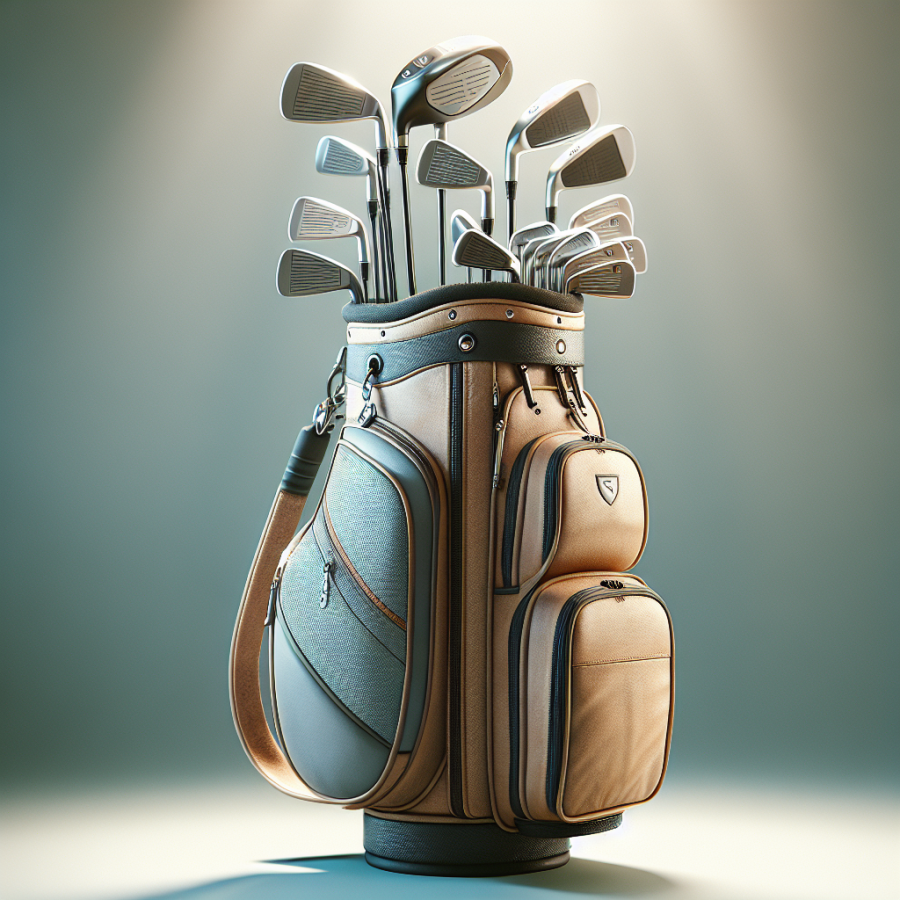Essential Steps to Successful Golf Club Organization: From Putter to Driver
Organizing your golf clubs effectively in your bag is crucial for success in the game. It allows you to easily find and access your clubs while saving you significant time and effort that can be directed into focusing on your game instead. To help you enhance your golf game, here are some essential steps to a successful golf club organization.
The first step in organizing your golf clubs is understanding your clubs. In a standard golf set, there are 14 clubs that are composed of woods, irons, hybrids, wedges, and one putter. Familiarise yourself with each club's intended purpose and take note of how frequently you use each club.
Start by placing the woods, which include the driver and fairway woods, in the back compartments of your golf bag. These clubs are usually the longest, and placing them at the back ensures they won’t interfere with your retrieval of other clubs. Furthermore, this arrangement ensures that the club heads stick out, providing you an easy overview of your clubs.
Next, clubs should be arranged by type and then by number. Following your woods, pack the long irons (2-4), followed by the middle irons (5-7), and then the short irons (8-9), in your bag. This arrangement should be from back to front. You should ensure the sequence makes sense to you and that you can easily reach and identify each.
After your irons, organize your wedges. Many players refer to their pitching wedge (PW), sand wedge (SW), lob wedge (LW), and gap wedge (GW) as their scoring clubs because these are typically used closer to the green where precision is crucial. Keeping these clubs together, ideally near the front of your bag, will allow you to quickly select the perfect club for striking those high-pressure shots.
Lastly, but most definitely not least, find a secure place for your putter. Many golf bags have a dedicated putter well alongside the other club compartments. If your bag lacks a specific place for putters, look for an available spot where the putter can be easily accessed and won't be damaged by other clubs.
For those with hybrid clubs, the placement depends on whether you use your hybrids to replace long irons, or if they function as fairway woods for you. Place them with the iron they replace or beside the fairway wood they are meant to replace.
Understanding the Science behind Perfectly Arranging Golf Clubs in Your Bag
The golf bag is essentially your portable toolkit, the organized sanctuary where every item has its proper place. Arranging your golf clubs in your bag may seem like a simple task — tossing them into the golf bag and calling it a day. However, there's an art and science to it that can be considerably advantageous to your game. It's not only about aesthetics and ease of retrieval; it also involves aspects like club protection, strategic game improvement, and adhering to rules set by golf authorities such as the Royal and Ancient Golf Club of St Andrews and the United States Golf Association.
The science behind it is rooted in a combination of physics, ergonomics, and spatial organization. Essentially, every part of the golf bag is designed to hold specific types of golf clubs, considering factors such as club length, utility frequency, and gravity's impact on club distribution.
Firstly, let's talk about the role of club length. The longest clubs, like drivers and woods, go at the topmost section of the bag — the furthest from the strap. This is because longer clubs will go deeper in the bag, allowing shorter clubs to be quickly accessible on top. By doing this, one prevents the clubs from jamming together, ensuring ease of access and protecting their longer, delicate shafts — especially considering they're often made of lightweight, sensitive materials.
Next, consider this: not all clubs are used equally. It makes sense to place clubs like wedges, which a golfer would use more frequently, in an accessible section of the bag, but don't need to be in the individual slots as they have shorter shafts. Furthermore, it’s crucial to end with the putter. Given how often it's used, it's best nearby, either attached on the side or in a separate compartment of the bag.
The influence of gravity on club distribution is another important aspect. Storing heavier items towards the bottom of the bag directs the weight toward the bottom, creating a lower center of gravity that makes the bag more stable when it's standing on its own.
One must also honor the rules dictated by golf governing bodies. Both the United States Golf Association and the Royal and Ancient Golf Club limit a golfer to a maximum club count of 14 in play for each round. This doesn't only apply to tournaments but also acts as a general guideline in club arrangement to prevent overstuffing and chaotic organization.




